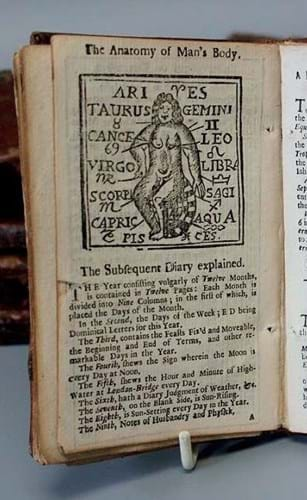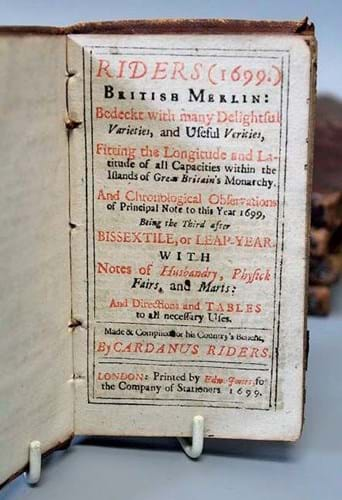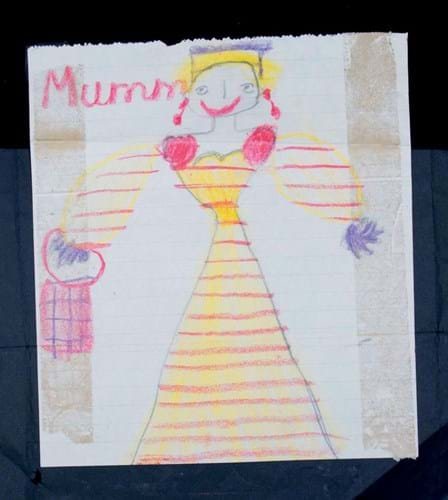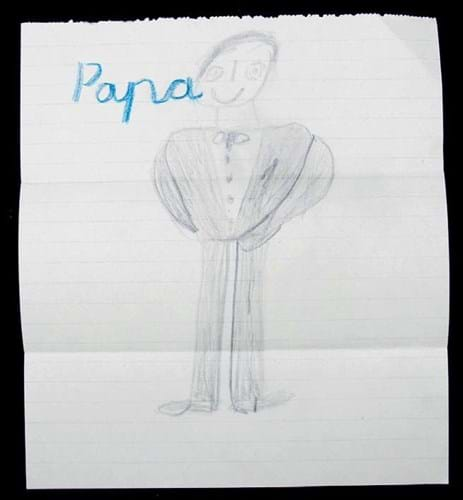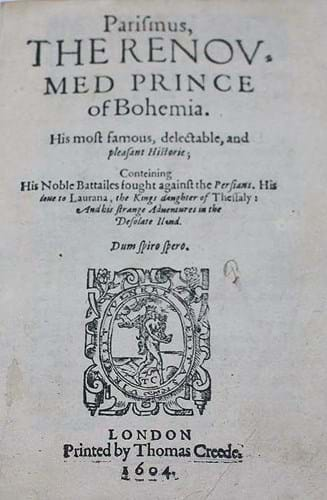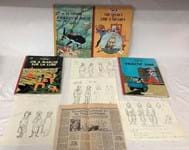Way before the days of the internet with copious information easily available on a phone you could have carried an almanac in a pocket.
Along with usually a calendar of the year, these handy little guides included data on astronomical phenomena such as phases of the moon, high and low tides.
Not only that, but a mass of miscellaneous details like signs of the zodiac (astrology and predictions were a major theme of earlier almanacs), seasonal reminders for farmers, a table of kings, a geographical description of the world, annual fairs and festivals, and substantial medical notes.
The heyday of almanacs was in the 17th-18th centuries. They were produced cheaply so were available to all classes.
The best-known British version is the Vox Stellarum of Francis Moore, first published in 1700.
Magic Merlins
Another example was the Riders British Merlin which first appeared in 1656 and continued to be published well until at least 1830. It was controlled by the Stationers’ Company which maintained a virtual monopoly over the valuable almanac trade until the 18th century.
When James I made his Royal Grant of 1603 to the company conferring privileges ‘for the benefit of the poore of the same [company]’, it included not only the sole right to enjoy profits from the sale of psalters and psalms, but also an identical right to enjoy profits from the sale of almanacs and prognostications.
A group of 17 British Merlins printed in red and black in gilt-tooled full-hide binding came up for auction at Hansons (25% buyer’s premium) in Banbury on June 17. The earliest dated to 1699 and the other 16 came for years between 1700-33. They sold on the low estimate of £4000.
These were supposedly written by ‘Cardanus Riders’, thought to be an anagram pseudonym for Richard Saunders (1613-75?), an English physician and astrologer.
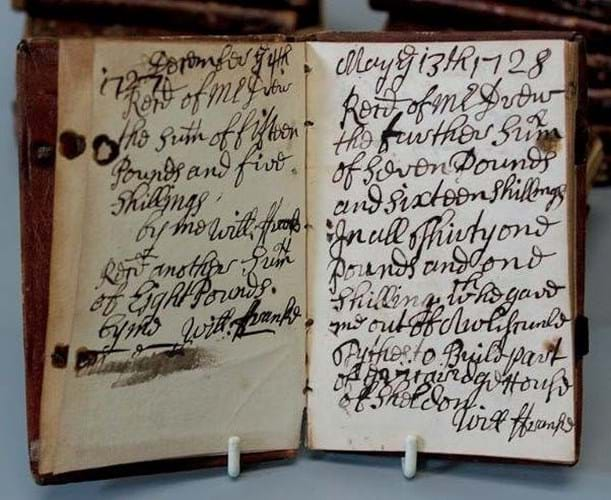
A group of Rider’s British Merlins almanacs sold for £4000 at Hansons.
Part of the attraction of almanacs comes from the blank pages left for notes to be included by their owners, giving a unique provenance to each if these are used.
This group was formally the property of Francis Drewe (c.1674-1734) of The Grange, Broadhembury, Devon, and then by descent to the vendor. They contain many handwritten notes regarding the running of the estate, visitors and other affairs. Drewe was a lawyer and Tory politician who sat in the House of Commons from 1713-34.
Royal appointment
A very different lot offered in Hansons’ Bishton Hall saleroom on June 16, as part of The Bloomsbury Library Auction, came in the form of childhood drawings by King Charles III of his parents.
The crayon and pencil sketches inscribed “Mummy” and “Papa” were produced by a very young Charles in c.1953-55 when he was five or six. Estimated at £5000-10,000 in Staffordshire, they sold for £46,000 to Angus Neill, of Felder Fine Art, London.
They were part of a royal memorabilia collection which included 10 early drawings by the king. Together the sketches achieved more than £61,000 and attracted bids from all over the world including Europe, the US and Africa.
Another stand-out item was a home-made birthday card, produced c.1953-54 for his father. It featured a sailing boat and “Happy Birthday” on the front. Inside was the message, “Papa with love from Charles” followed by kisses and circles. It sold for £5500 against a £1500-2500 estimate.
The collection also featured family photos, Christmas cards and royal letters. The latter included two letters written by Queen Elizabeth II, one of which, written during a royal tour of India in 1961 to her mother, The Queen Mother, and signed ‘Lilibet’, made £16,000 (guide £3000-5000).
All the items were amassed mostly in the 1950s-70s by Henry Ramsay Maule (1915-81).
Maule, from Reading, Berkshire, was the author of several books and worked as British correspondent at the New York Daily News for 21 years specialising in royal stories. He also wrote, under a pseudonym, All The Queen’s Children, an authoritative book about Queen Elizabeth II’s offspring.
He was a friend of royal photographer Marcus Adams and enjoyed a long working friendship with members of the Royal Household.
Maule gained Palace approval to write a biography of Prince Philip and was in the process of collating information for this with the ‘downstairs’ help of long-standing royal servant Charlie. Maule died before this could be completed. The items, which were given to him to assist with his work, were inherited by his family on his death in 1981.
Shakespeare’s printer
Sold for £3000 against a guide of £500-800 was a 1604-05 edition of Parif[s]mus The Renowmed [sic] Prince of Bohemia by Emanuel Forde, 1598.
Two parts in one, it was produced in full vellum in London by Thomas Creed (or Creede). Creede was an Elizabethan and Jacobean London printer, publishing works in c.1593-1617 from Thames Street and The Eagle and Child in Exchange Street, London.
Considered the best printer of his time, he produced five first editions of Shakespeare, as well as Greenes Groat’s-Worth of Witte.
Hansons noted: “This title and edition of this ‘Court’ romance isn’t listed in the printer’s bibliography.
“The 1598 first and a 1608 edition are both held in parts by the British Library, but no copies with this date were located at time of cataloguing.”


